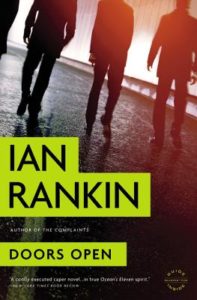As a child, I had carte blanche to read whatever I wanted. My parents couldn’t speak English and were never able to tell if I was reading something inappropriate for my age. What little oversight I did have came from my older sisters, but invariably applied to “romantic” content. When it came to crime and horror, I had complete freedom.
Cue an enduring love of dark fiction, from the twisted protagonists of Thomas Harris to the slow-creep dread of Stephen King. Over time, I grew accustomed to workaday motives, otherwise known as the “four L’s”: lust, love, loathing and loot. What does still have the power to chill me is crime by committee. There’s something especially appalling about a group of people coming together to carry out a crime. It subverts our belief that humans are fundamentally good. One perpetrator is a bad apple; three is a pattern.
I use a group misdeed for the premise of Take It Back, my novel in which four young men are accused of rape by a classmate. I wanted to explore the circumstances in which a crime like this might happen. Was it spur of the moment, or did they conspire to attack her? Was it initiated by an evil ringleader or was it truly a group decision?
The dynamic between co-conspirators is fascinating in fiction. Below, I share some novels which use it to great effect. After all, what’s creepier than a cold-blooded killer? Two working in tandem.
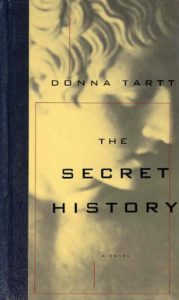
The Secret History, Donna Tartt
From the very first pages of The Secret History, we know that Bunny is dead. We know that he was killed by four people—including our narrator—and we know that he was pushed off a cliff. What we don’t know is why. So begins Donna Tartt’s exquisite novel about a cliquey group of Classics students at an elite Vermont college. Narrator Richard Papen is a Carraway-like outsider who observes, then befriends, the group and is drafted into their plan to kill their friend Bunny. The cool and callous way in which they plan the murder is both chilling and hypnotic. The Secret History sits firmly in the order of literary fiction, but is a masterclass in plotting and suspense—as riveting as any thriller I’ve read.
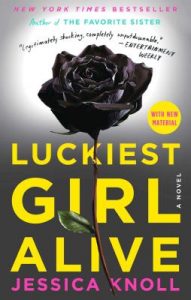
Luckiest Girl Alive, Jessica Knoll
TifAni FaNelli hates her lowbrow name. She’s tired of her gauche mother and feeble father and can’t wait to reinvent herself when she transfers to a private high school. She becomes ‘Finny’ and is initiated into the popular and beautiful in-crowd. Soon after, Dean Barton, a “flashing idol on the soccer field”, invites her to a clandestine party but, on arrival, TifAni notices that she’s the only girl present. She acts unfazed and proceeds to drink and party. Later that night, as she drifts in and out of consciousness, she is raped by three different schoolmates. Did they conspire to lure her here or was it boyish hijinks gone astray? Luckiest Girl Alive is a timely look at trauma, recovery and reinvention wrapped up in a compulsive thriller.
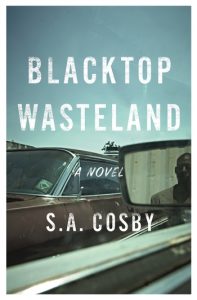
Blacktop Wasteland, S. A. Cosby
“Like Breaking Bad in a high-speed collision with Drive” reads the pitch for Blacktop Wasteland—and it doesn’t disappoint. Beauregard “Bug” Montage, once the sharpest wheelman on the east coast, has given up a life of crime to set up shop as a mechanic in rural Virginia. When a competitor poaches all his customers, Bug finds himself on a financial precipice and agrees to a one-time job: a diamond heist with a get-rich payout. Unluckily for Bug, his hapless co-conspirators bungle the robbery, raising the stakes to life or death. As well as blistering action scenes and full-throttle car chases, Cosby serves up an explosive mix of racial tension, small-town deprivation and destructive masculinity.
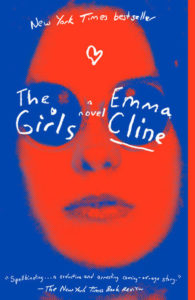
The Girls, Emma Cline
Evie Boyd is a lonely 14-year-old who is off to boarding school at the end of the summer of ‘69. Idling in the park one day, she is transfixed by ‘the girls’, a trio of young women from a nearby commune (a fictionalized version of the Manson Family). Bored and restless, Evie is drawn into the commume and inducted into their customs including having sex with cult leader Russell, a cold and manipulative narcissist. Russell dreams of a record deal and when he is snubbed by a musician friend, he sends the girls armed with knives to wreak revenge for him. Infused with a simmering sense of dread, The Girls is a delicious slice of dark Americana.

An Untamed State, Roxane Gay
Roxane Gay’s debut novel is not for the fainthearted. Mireille Duval Jameson, the American-born daughter of a Haitian construction tycoon, is kidnapped in broad daylight outside the gated compound of her father’s home. The kidnappers, a group of seven men who fancy themselves as revolutionaries, demand a ransom of a million dollars. Their ringleader blames Mireille’s family and their ilk for the problems in the country. “You are complicit even if you do not actively contribute to the problem because you do nothing to solve it,” he tells her. When Mireille’s father refuses to pay, the men rape and torture her for 13 days. These scenes are harrowing but feel justified in a novel that is both a love letter to and a damning indictment of Gay’s ancestral home.

Lord of the Flies, William Golding
It would be remiss not to mention Lord of the Flies when exploring group violence in fiction. This canonical tale of struggle and survival begins with a plane full of British schoolboys crashing on a deserted island. The castaways establish a working democracy with fair-haired Ralph elected as leader and chubby, bespectacled Piggy as counselor. The system seems to function, but Jack, leader of the school’s choir, wants power and seeks to form his own tribe. Within months, the veneer of civility breaks down to reveal “the end of innocence, the darkness of man’s heart” and the horrifying savagery that may lie within us all.
Doors Open, Ian Rankin
What does an internet millionaire do with too much time on his hands? In Doors Open, retired software mogul Mike McKenzie decides to “liberate”’ some of the art held in storage by the National Gallery in Scotland. Mike and his co-conspirators, a banker and an art professor, believe that art should be on show and not stored away in a hidden crypt to gather dust and value. They plan to use “Doors Open”—a scheme which offers public access to Scotland’s built heritage for one day a year—to pull off the heist. They enlist the help of a local crime boss and the slick theft soon gives rise to ego, greed and violence. Doors Open is lighter than Rankin’s other fare but is never less than thrilling.
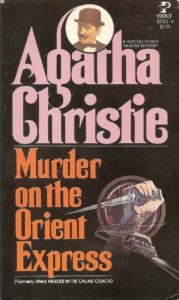
Murder on the Orient Express, Agatha Christie
At half past midnight, the Orient Express runs into a snowdrift. It is forced to stop, much to the chagrin of its distinguished passengers. The train is unusually full, but by morning, there is one fewer passenger walking the aisles. Shady American businessman Mr Ratchett has been murdered in his cabin, stabbed a dozen times, his door still locked from inside. Detective Hercule Poirot is tasked with finding the killer. He soon discovers that nearly every passenger has a motive, but who is the real culprit? Without giving too much away, it’s safe to say that all is not as it seems. With clean prose and surprising humor, Murder on the Orient Express redefined the locked-room mystery genre.
***


